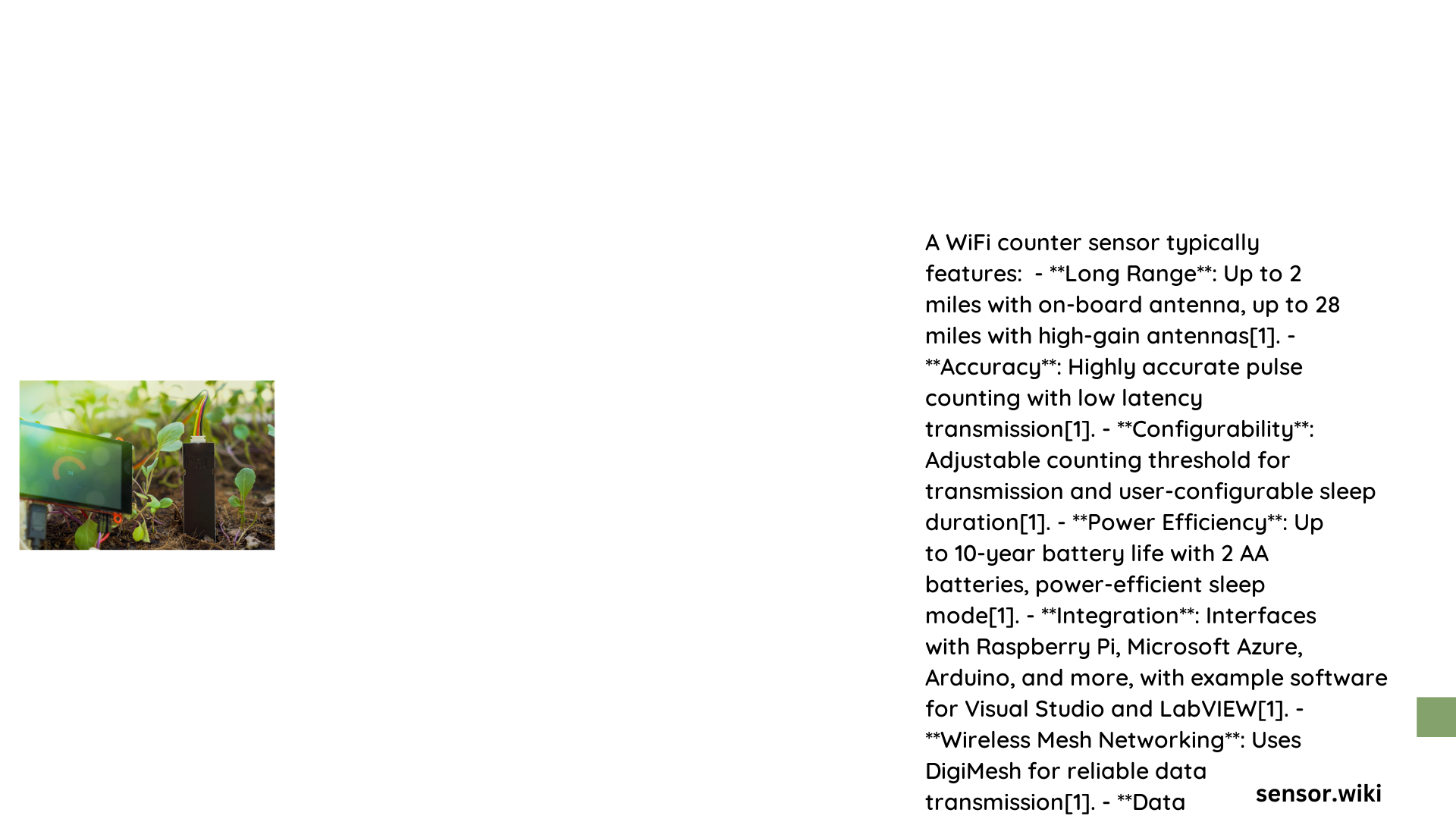WiFi counter sensors represent cutting-edge technology enabling precise human movement tracking through advanced radar and optical detection mechanisms. These intelligent devices leverage sophisticated algorithms to capture real-time occupancy data, providing businesses and organizations unprecedented insights into foot traffic, visitor behavior, and spatial utilization without compromising individual privacy.
What Makes WiFi Counter Sensors Unique?
WiFi counter sensors distinguish themselves through multiple technological approaches:
How Do Detection Technologies Work?
- mmWave Radar Technology
- Utilizes electromagnetic waves for precise human detection
- Operates effectively in complete darkness
-
Penetrates physical obstacles with high accuracy
-
3D Active Stereo Vision
- Employs AI-powered tracking algorithms
- Differentiates between adults and children
- Provides near-99% counting precision
What Technical Specifications Define Performance?
| Sensor Type | Detection Range | Accuracy | Temperature Tolerance |
|---|---|---|---|
| SensMax TAC-B | 100 sq. meters | 95-98% | -10°C to +50°C |
| V-Count Nano | Flexible | 99% | -25°C to +75°C |
| PEARL Wireless | Single/Double Doorways | 90-95% | 0°C to +40°C |
What Challenges Do WiFi Counter Sensors Address?
Businesses and organizations face complex challenges in understanding human movement:
- Retail Space Optimization: Analyzing customer flow patterns
- Building Management: Monitoring occupancy levels
- Safety Compliance: Tracking maximum permitted occupancy
- Resource Allocation: Understanding peak traffic periods
How Are Data Processed and Transmitted?
WiFi counter sensors typically process data through:
- Real-time transmission protocols
- Encrypted WiFi communication
- Cloud-based analytics platforms
- Seamless integration with management systems
What Privacy Considerations Exist?
Privacy remains paramount in WiFi counter sensor deployment:
- Anonymous data collection
- No personal identification tracking
- Aggregate movement insights only
- Compliance with data protection regulations
What Are Implementation Costs?
Cost considerations include:
- Initial sensor purchase: $300-$800 per unit
- Installation: $100-$500
- Monthly subscription: $50-$250
- Maintenance: Minimal annual expenses
What Future Developments Are Anticipated?
Emerging trends in WiFi counter sensor technology:
- Enhanced machine learning algorithms
- More compact sensor designs
- Improved multi-environment adaptability
- Integration with IoT ecosystems
Conclusion

WiFi counter sensors represent a transformative technology enabling unprecedented insights into human movement and spatial dynamics across diverse environments.
